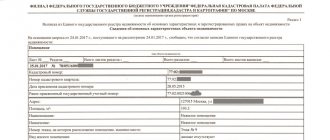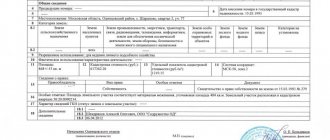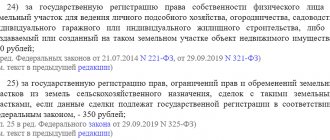What is an easement and its types
It is a special form of use of real estate, which is established in order to ensure the normalization of the living conditions of a person who owns areas whose location is significantly worse than adjacent plots. The restriction applies to part of the area for the possibility of use by the interested entity. Such actions are provided for in Art. 23 of the Land Code of the Russian Federation. The limit can be set:
- By agreement of the participants - when both parties are satisfied with the established conditions for the use of land;
- By court decision - determined when one of the participants appeals due to objections to the proposed conditions;
- In the manner determined by regulatory enactments, the need to use the territory by the municipality and other government agencies and institutions.
In fact, this means that the owner of the plot accepts restrictions on the use of part of his personal property in favor of another landowner. He can do this voluntarily if there are the following reasons:
- Another subject is forced to use his land by external reasons;
- The damage from the established restrictions is insignificant for the owner;
- A certain amount of money is transferred to the owner to pay off the obligations.
With the signing of the agreement or delivery of the relevant court order, the applicant is the owner of the easement. At the same time, he gets the opportunity to use part of someone else’s property; any other property claims cannot be considered.
There are two types of easements:
- Private. Restrictions are applied if adjacent landowners are interested in the normal use of land real estate;
- Public. They are established by the state in order to normalize the living conditions of the population of the municipality.
Legislative regulation
The main laws regulating the termination of easements are the Civil and Land Codes of Russia.
They contain comprehensive grounds for the procedure, rules for lifting the encumbrance, voluntary and judicial procedures for lifting restrictions. The Code of Civil Procedure of the Russian Federation regulates the process of canceling an easement if it occurs through judicial proceedings. It establishes the obligation to file a claim and provide additional documentation as evidence necessary to fully resolve the conflict.
Considering that the imposition of encumbrances and their cancellation must be registered in the manner prescribed by law, this procedure is regulated by the Federal Law “On Real Estate Registration”.
Grounds for cancellation of easement
In addition to lifting restrictions for natural reasons, they may also be lifted due to the emergence of other conditions. Such powers arise for the owner of the encumbered object in the event of non-compliance with his property rights. This applies to:
- Damage to the fertile layer of the earth;
- Destruction of the natural environment;
- Failure to comply with sanitary and environmental standards;
- Carrying out unauthorized work;
- Violation of the boundary lines of a land property transferred for use;
- Failure to pay for the encumbrance.
Guided by Article 12 of the Civil Code of the Russian Federation and Art. 60 of the Land Code of the Russian Federation, the owner may demand payment of compensation for property damage caused by an unscrupulous owner in whose favor restrictions have been established.
In addition, the reason for removing the encumbrance may be the disappearance of the original requirements that became the basis for its establishment. These may be cases where opportunities arise to solve the assigned problems that do not require continued restrictions on the use of land.
Rights
The rights of the owner of the easement are enshrined in Article 275 of the Civil Code of the Russian Federation. These include:
- The right to use the land that is the subject of the agreement, within the framework of those possibilities that have been documented.
- A change in the owner of the encumbered plot does not cancel the agreement; the right to preserve it remains with the owner of the restriction (in accordance with Article 275 of the Civil Code of the Russian Federation).
- The right to demand from the owner of the land the provision of that part of the land plot on which an encumbrance has been imposed.
- The easement has the right to apply for re-establishment of the easement if necessary.
Termination of easement on land
In fact, this is the termination of the existing encumbrance on land property, which was established to ensure the normal exploitation of adjacent areas of land. If a public easement is cancelled, it is assumed that the use of other people’s lands will cease for purposes aimed at improving the quality of life of residents of a particular administrative entity or several.
Article 276 of the Civil Code of the Russian Federation and Art. 48 of the Land Code of the Russian Federation defines the grounds upon the occurrence of which the easement is cancelled.
Cancellation of an easement on a land plot can be carried out when appropriate reasons arise. Its initiator can be the owner of a land object with restrictions in use and the persons who were the founders of the established easement.
The procedure for terminating different types of easements differs not only in the actions carried out, but also in the evidence base used as grounds.
- Private may be canceled due to:
- Loss of relevance of the grounds in connection with which it appeared (when, without using the allotment, it was possible to achieve the results for which the encumbrances were established, and the need for it disappeared);
- It is impossible to use the encumbered object for its intended purpose.
Cancellation of a private obligation by agreement of the participants is the simplest way to remove restrictions. During the procedure, the need to confirm your authority is reduced to zero, and the terminated agreement can only be registered.
The impossibility of reaching a mutual decision between the parties entails unilateral termination of the agreement on the establishment of encumbrances. In this case, the initiator must go to court to justify his rights to the full use of land property. But the grounds on which contractual legal relations can be terminated must be preserved and comply with the requirements of the law.
- A public easement can only be canceled unilaterally, since the decision to impose an encumbrance is made by government agencies. It must also be registered with the appropriate service.
Regardless of the type of easement, if one of the parties disagrees with its cancellation, the process can be carried out during court hearings. The grounds for its termination do not change in any case.
Responsibilities of a person with a limited right to use someone else's land plot
The owner of the easement is obliged:
- Maintain the intended purpose of the land plot.
- Carry out cadastral work at your own expense to describe and enter information about the encumbrance into the register.
- Register the agreement and bear the costs of paperwork.
- Use the soil carefully and carefully.
- Compensate for expenses incurred by the owner of the site in connection with the installation of the encumbrance within the agreed period.
- Pay fees for land use in a timely manner (in accordance with Article 39.25 of the Land Code of the Russian Federation).
- Register and pay the fee for the waiver agreement.
Methods for canceling an easement
The possibility of removing encumbrances can be done in two ways:
- By mutual agreement. The process takes place in several stages and is as follows:
- Determination of circumstances entailing the possibility of canceling the current encumbrance. This can be done by the party interested in its removal and by both participants;
- Concluding a separate agreement on termination of the easement. The document must contain information about the owner and holder of the easement, reasons for establishing the encumbrance, information about the site, grounds for cancellation of the easement, and be signed by both parties. It will become the determining factor that served as the basis for registration of a legally significant fact;
- Appeal to the authorized body with an application to lift restrictions. They are the Departments and Committees of Land and Property Relations of the administrations of municipalities or constituent entities of the country. In addition to the application, documentation certifying the legality of the stated requirements is submitted. They may be a plan for the operation of the encumbered facility, confirming the impossibility of its use for its intended purpose, or evidence that the use of the territory is no longer necessary. After their submission, within 10 days, employees of the institution check the submitted papers and review them by the head. Within no more than thirty days, an appropriate decision must be made and a resolution prepared;
- Carrying out registration actions to cancel established restrictions with obtaining the corresponding extract from the Unified State Register. They are produced in Rosreestr no later than 10 days after signing contractual obligations or receiving a resolution, and a corresponding entry is made in the register of rights. The extract issued at the end of the procedure can be used as evidence indicating the nullity of third party claims for actions related to the use of the easement.
- Termination of the agreement in court. If it is impossible to agree on the removal of encumbrances by agreement, you will have to go through the following stages of resolving the issue:
- Pre-trial settlement of disputes. To do this, you will need to draw up a written notification to the other party about the disappearance of the reasons for which the encumbrances were established. The document is sent by post with notification of its receipt;
- Preparation of a statement determining the possibility of terminating restrictions. It is drawn up by the person initiating the cancellation of the encumbrance;
- Filing a claim with the courts, attaching documentation that serves as evidence confirming the possibility of canceling the easement;
- Consideration of the case on its merits, during which the information presented is studied and analyzed. Adjudication;
- Concluding an additional document on the termination of the contract to establish encumbrances or using a court order to terminate the contractual relationship;
- The procedure for registering the lifting of restrictions on the basis of a signed agreement or a decision of a judicial authority.
Differences
There are the following differences in land encumbrances of a permanent and urgent nature:
| Comparative parameters | Urgent | Constant |
| Purpose of use |
|
|
| Grounds for establishing |
|
|
The main difference is the nature of the work (urgent or permanent). Also, there is no court case to establish an urgent right of use.
From our separate publications on easements and the rules for registering them, you can find out what the difference is between private and public easements, how this type of encumbrance differs from rent, and how the amount and procedure for its payment are determined.
Incurring expenses when withdrawing limited rights of use
The termination of the encumbrance results in certain expenses, since such a process relates to the performance of legally significant activities. The main expense will be the payment of the state fee for completing the registration process. Depending on the holding entity - a citizen or an organization - the amount can range from 500 to 2000 rubles.
If preparing an application and the necessary documents requires contacting specialists with appropriate training, or a notary, expenses may range from 2,000 to 15,000 rubles, depending on the type of restrictions.










